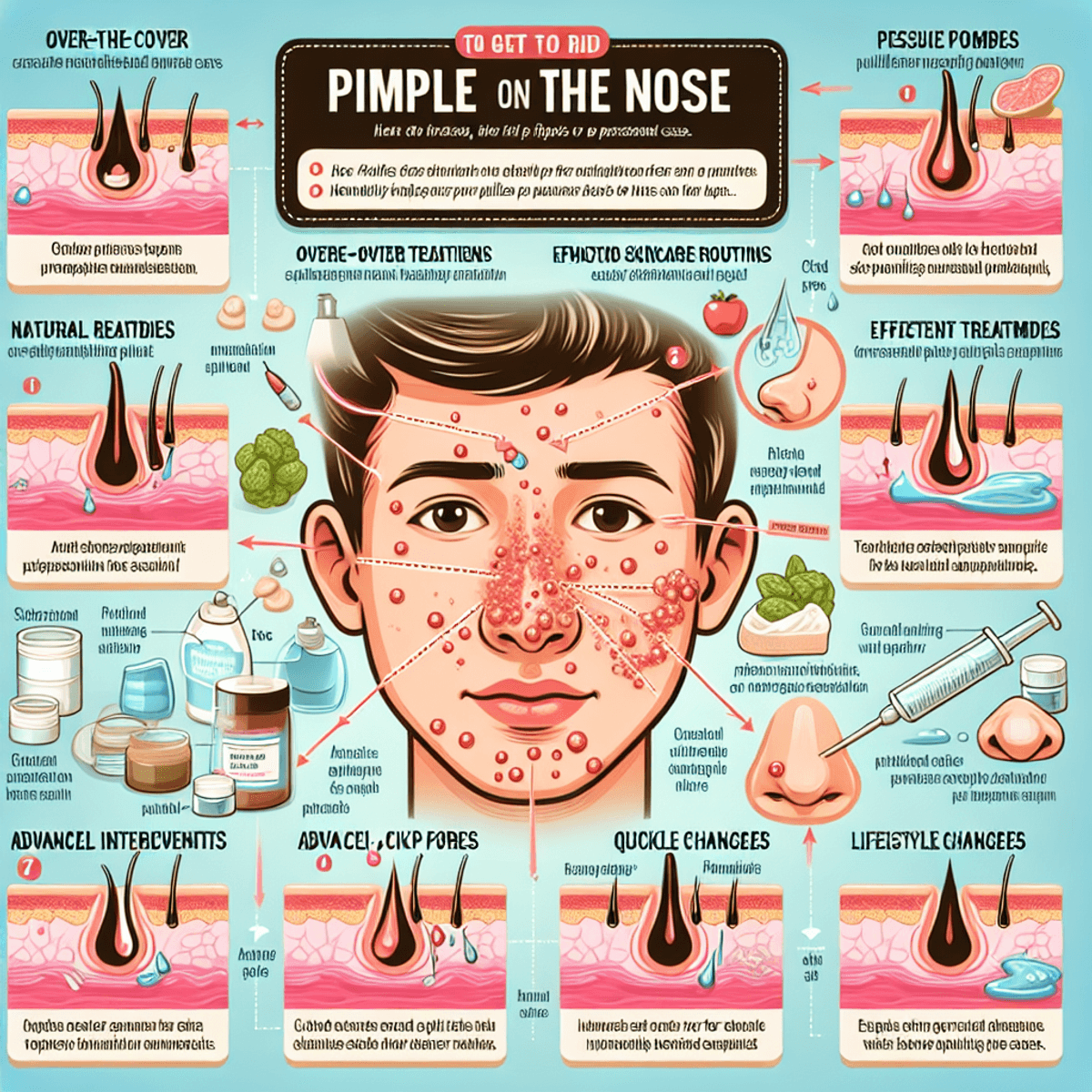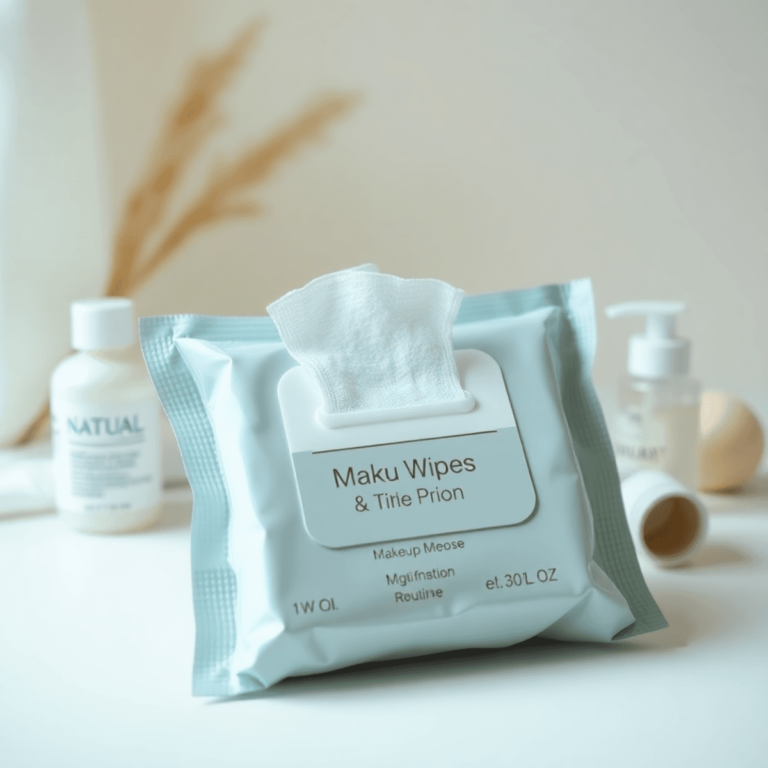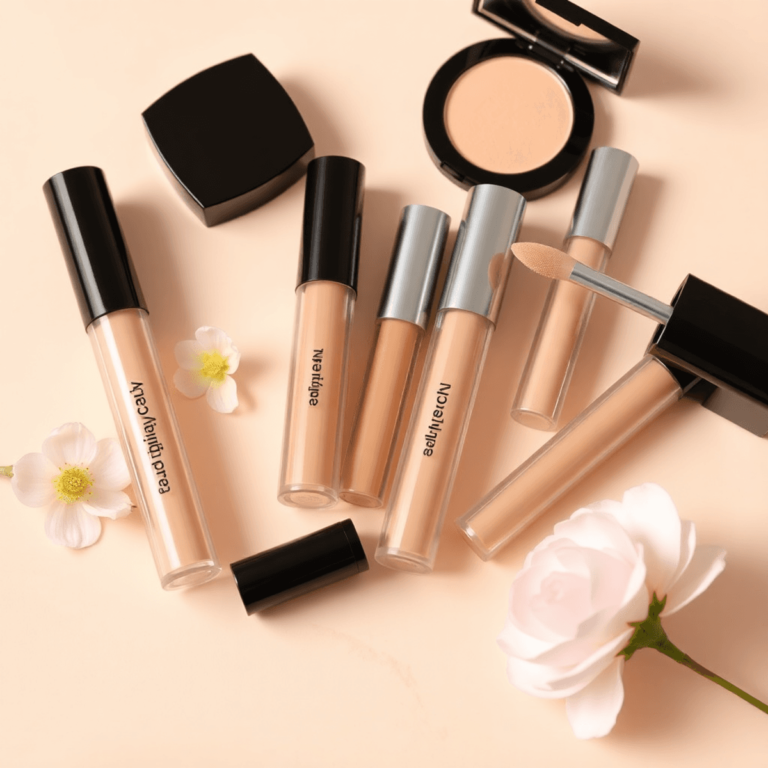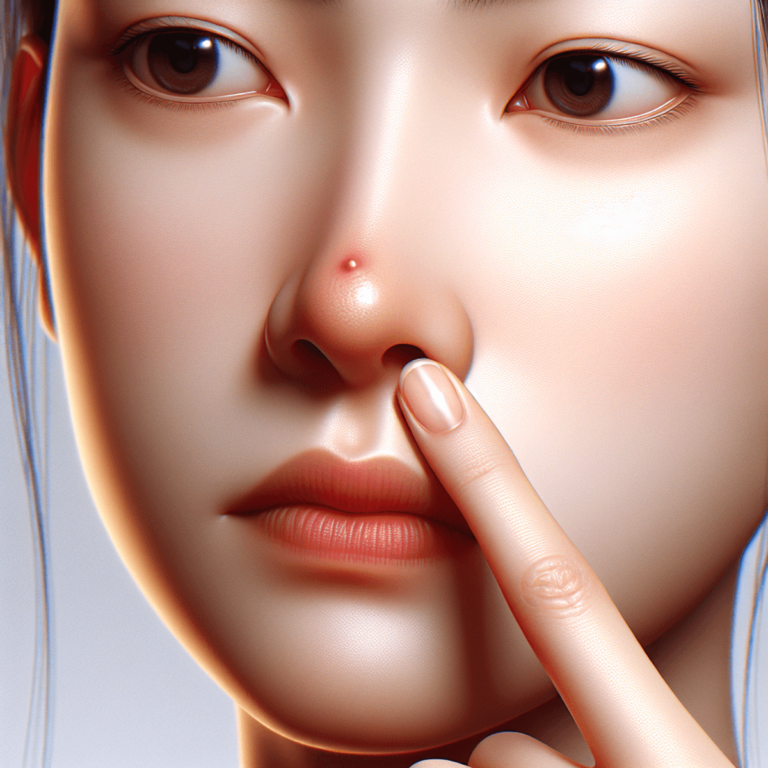How To Get Rid Of Pimples On The Nose?

Introduction
How To Get Rid Of Pimples On The Nose? Pimples on the nose, often referred to as nose acne, are a common issue affecting many individuals. These blemishes can be particularly bothersome due to their prominent location and potential for discomfort.
Addressing pimples on the nose is crucial for both aesthetic and comfort reasons. Not only can they impact your appearance, but they can also cause pain or irritation, especially if left untreated.
This article will provide you with practical solutions to get rid of pimples on the nose. We will cover:
- Over-the-counter treatments
- Natural remedies
- Effective skincare routines
- Advanced interventions for persistent cases
- Quick fixes for emergencies
- Lifestyle changes to support clear skin
By implementing these strategies, you’ll be better equipped to manage and reduce pimples on your nose effectively.
Understanding Pimples on the Nose
Pimples, or acne, are small inflamed spots or pustules on the skin. They form when hair follicles under the skin become clogged with oil and dead skin cells. On the nose, pimples often appear due to the high concentration of sebaceous glands that produce sebum (oil). This excess sebum can mix with dead skin cells and clog pores, creating an ideal environment for bacteria to thrive.
Common Causes of Pimples on the Nose
Several factors contribute to the development of pimples on the nose:
- Clogged Pores: One of the primary causes is clogged pores due to excess oil production. The sebaceous glands around the nose are particularly active, leading to a higher likelihood of pore blockages.
- Hormonal Fluctuations: Hormones play a significant role in stimulating oil production. During puberty, menstruation, pregnancy, or periods of high stress, hormonal changes can trigger an increase in sebum production.
- Bacterial Growth: When pores are clogged, bacteria such as Propionibacterium acnes can proliferate, leading to inflammation and pus-filled pimples.
- Diet and Lifestyle: Consuming certain foods high in sugar or dairy products may exacerbate acne. Additionally, poor skincare habits and using comedogenic (pore-clogging) products can worsen breakouts.
How to Remove Pimples on the Nose
Addressing pimples effectively involves understanding their root causes:
- Over-the-Counter Treatments: Products containing benzoyl peroxide or salicylic acid help kill bacteria and exfoliate dead skin cells.
- Natural Remedies: Ingredients like tea tree oil or witch hazel offer anti-inflammatory and antibacterial benefits.
- Consistent Skincare Routine: Regular cleansing with a suitable gel-based cleanser for oily skin types helps keep pores clear.
For those wondering how to remove pimples overnight or how to remove pimples naturally and permanently, combining a strategic approach with patience is key. Temporary fixes might provide quick relief but establishing long-term habits ensures prolonged skin health.
Effective Treatment Options for Nose Pimples
Over-the-Counter (OTC) Treatments
Benzoyl Peroxide
One of the most effective treatments for nose pimples is benzoyl peroxide. This topical treatment works by:
- Killing bacteria: Reduces the bacteria on the skin that contribute to acne.
- Unclogging pores: Helps to clear out and prevent clogged pores.
- Reducing inflammation: Minimizes swelling and redness associated with pimples.
Benzoyl peroxide is available in various strengths, typically ranging from 2.5% to 10%. Start with a lower concentration to assess your skin’s tolerance. Apply it once daily, then gradually increase the frequency if needed.
Salicylic Acid
Another popular OTC treatment is salicylic acid. This beta hydroxy acid (BHA) works by:
- Exfoliating the skin: Removes dead skin cells that can clog pores.
- Penetrating oily areas: Especially effective for oily skin types as it can penetrate deep into pores.
- Reducing oil production: Helps to control excess sebum that contributes to pimple formation.
Salicylic acid is often found in cleansers, toners, and spot treatments, generally in concentrations of 0.5% to 2%. Use it consistently for best results.
Natural Remedies
Sometimes, natural remedies can be beneficial alongside or in place of conventional treatments. Here are two commonly recommended options:
Tea Tree Oil
Renowned for its antimicrobial properties, tea tree oil can help reduce nose pimples by:
- Killing bacteria: Acts as a natural antibacterial agent.
- Reducing inflammation: Soothes redness and swelling.
- Drying out pimples: Helps to shrink pimples by drying them out.
To use tea tree oil, dilute a few drops with a carrier oil (like jojoba or coconut oil) and apply it directly to the affected area using a cotton swab. Avoid undiluted application as it can be too harsh on the skin.
Witch Hazel
Another natural remedy is witch hazel, known for its anti-inflammatory and astringent properties. Witch hazel works by:
- Tightening pores: Reduces pore size and prevents clogging.
- Soothing irritation: Calms inflamed skin.
- Controlling oil production: Helps balance sebum levels on the skin.
Apply witch hazel using a cotton pad after cleansing your face. Look for alcohol-free formulations to avoid drying out your skin.
Combining Treatments
For optimal results, consider combining both OTC treatments and natural remedies in your skincare routine. For instance:
- Cleanse with a salicylic acid cleanser
- Tone with witch hazel
- Spot treat with benzoyl peroxide
- Apply diluted tea tree oil as needed
Always patch test new products before full application to ensure they do not irritate your skin.
These treatment options provide various ways to tackle nose pimples effectively, allowing you to choose what best suits your skin type and preferences.
Skincare Routine for Preventing Breakouts on the Nose
Maintaining a consistent skincare routine is essential to prevent breakouts specifically targeting the nose area. This approach not only helps to clear existing pimples but also prevents new ones from forming. Here’s how to get rid of pimples on the nose and keep them at bay with an effective skincare regimen.
Recommended Steps for an Effective Skincare Regimen
1. Cleansing
Begin with a gel-based cleanser suitable for oily skin types. These cleansers help remove excess oil, dirt, and impurities that can clog pores.
Product Example: CeraVe Foaming Facial Cleanser is known for its gentle formula that effectively cleanses without stripping the skin of its natural moisture.
2. Exfoliation
Exfoliate regularly but not excessively. Over-exfoliating can irritate the skin and worsen acne. Aim for 2-3 times a week using a chemical exfoliant like salicylic acid.
Product Example: Paula’s Choice Skin Perfecting 2% BHA Liquid Exfoliant penetrates deep into pores to unclog them and reduce inflammation.
3. Toning
Use a toner to balance the skin’s pH levels and remove any residual impurities left after cleansing.
Product Example: Thayers Witch Hazel Toner is alcohol-free and contains aloe vera, making it a soothing option for acne-prone skin.
4. Moisturizing
Opt for a lightweight, non-comedogenic moisturizer that won’t clog pores. Even oily skin needs hydration to maintain balance.
Product Example: Neutrogena Hydro Boost Water Gel provides intense hydration without leaving a greasy residue, suitable for oily skin types.
5. Spot Treatment
Apply targeted treatments like benzoyl peroxide or tea tree oil directly on pimples to reduce size and redness.
Product Example: Clean & Clear Persa-Gel 10 Acne Medication contains 10% benzoyl peroxide, effective in treating severe breakouts.
6. Sun Protection
Using sunscreen daily is crucial as many acne treatments can make your skin more sensitive to UV rays. Choose a non-comedogenic sunscreen to prevent further clogging of pores.
Product Example: EltaMD UV Clear Broad-Spectrum SPF 46 is formulated for sensitive and acne-prone skin, offering protection without causing breakouts.
Additional Tips
- Non-Comedogenic Makeup Products: Ensure all makeup products are labeled as non-comedogenic to avoid blocked pores.
- Regular Cleansing Routine: Cleanse your face twice daily—morning and evening—to keep your pores clear.
- Avoid Touching Your Face: Touching your face frequently transfers oils and bacteria from your hands, which can lead to more breakouts.
- Change Pillowcases Regularly: Dirty pillowcases can harbor bacteria and oils that contribute to acne formation on the nose and other facial areas.
By following these steps in your skincare routine, you can significantly reduce the occurrence of pimples on your nose while promoting clearer skin overall. Consistency is key in achieving long-term results and maintaining healthy skin.
To enhance your results even further, consider incorporating some additional strategies into your routine. For instance, understanding how to maintain a healthy [
Advanced Treatments for Persistent Cases of Nose Acne
Persistent pimples on the nose can be frustrating, especially when home treatments and over-the-counter (OTC) products fail to deliver results. This is when seeking professional help from a dermatologist becomes crucial. Dermatologists can diagnose the underlying causes of persistent acne and recommend advanced treatment options tailored to your skin type and condition.
When to Consider Professional Help
If you’ve been diligently following a skincare routine and using OTC treatments like benzoyl peroxide or salicylic acid without significant improvement, it might be time to consult a dermatologist. Persistent acne could indicate more severe conditions such as cystic acne or rosacea, which require specialized treatments.
Advanced Treatment Options
Several advanced treatment options are available for stubborn nose acne:
- Cortisone Injections: These are particularly effective for reducing inflammation in severe cases of acne. A cortisone injection delivers a small amount of steroid directly into the pimple, significantly reducing swelling and promoting faster healing. This is ideal for painful cystic acne that doesn’t respond well to topical treatments. However, it’s important to understand the implications before undergoing this procedure; what I wish I’d known before getting my first cortisone shot could provide valuable insights.
- Laser Therapy: Laser therapy is another advanced option that targets the bacteria causing acne while simultaneously reducing oil production and inflammation. Different types of lasers are used depending on the severity and type of acne:
- Pulsed Dye Laser: Reduces redness and inflammation.
- Fractional Laser: Promotes skin regeneration and reduces scarring.
- Chemical Peels: Dermatologists may also recommend chemical peels containing stronger concentrations of acids like glycolic or salicylic acid. These peels exfoliate dead skin cells, unclog pores, and reduce the appearance of acne scars.
- Oral Medications: In some cases, oral medications such as antibiotics or isotretinoin (commonly known by the brand name Accutane) may be prescribed to control severe or persistent acne.
It’s important to discuss all potential side effects and benefits with your dermatologist before opting for any advanced treatment like those mentioned in this NCBI guide. Tailoring these treatments to your specific needs can lead to more effective management of persistent nose acne.
Quick Fixes and Emergency Solutions for Sudden Pimples on the Nose
When you need to reduce the appearance of a pimple overnight, several effective methods and products can come to your rescue. These quick fixes are ideal for those urgent situations where you have an important event coming up.
Overnight Pimple Removal Techniques
1. Hydrocolloid Patches (Pimple Patches)
- These small, adhesive patches can be placed directly on the pimple. They work by absorbing excess fluid and reducing inflammation.
- Brands like Cosrx Acne Pimple Master Patch or Mighty Patch are popular choices.
2. Benzoyl Peroxide Spot Treatments
- Applying a small amount of benzoyl peroxide (2.5% to 5%) directly on the pimple can help kill bacteria and dry out the blemish.
- Products like Clean & Clear Persa-Gel 10 are effective options.
3. Salicylic Acid Gels
- Salicylic acid helps exfoliate the skin and unclog pores. Using a salicylic acid-based spot treatment can reduce redness and swelling.
- Consider products such as Neutrogena Rapid Clear Acne Eliminating Spot Gel.
4. Ice Application
Applying an ice cube wrapped in a clean cloth to the pimple for a few minutes can help reduce swelling and redness quickly.
5. Tea Tree Oil
- Known for its antibacterial properties, tea tree oil can be dabbed lightly on the pimple using a cotton swab.
- Ensure it’s diluted with a carrier oil (like coconut oil) to avoid skin irritation.
6. Green Tea Extracts
Green tea has anti-inflammatory properties that can soothe irritated skin. You can use green tea extract topically or apply chilled green tea bags directly to the affected area.
7. Aloe Vera Gel
Aloe vera is renowned for its healing properties. Applying pure aloe vera gel can reduce inflammation and promote faster healing.
8. Toothpaste (with caution)
While some people swear by dabbing a bit of toothpaste on their pimples, it’s essential to use non-gel varieties sparingly, as it may cause dryness or irritation.
Combining these techniques with your regular skincare routine ensures that you manage sudden breakouts effectively without compromising skin health.
Lifestyle Changes to Support Clear Skin Overall
Adopting specific lifestyle changes can significantly improve skin health, particularly when battling pimples on the nose. Incorporating skin-friendly foods and staying adequately hydrated are essential components of this approach.
Skin-Friendly Foods
Certain foods are known to promote clear skin and should be included in your diet regularly:
- Antioxidant-Rich Foods: Berries, spinach, and nuts contain antioxidants that combat free radicals and reduce inflammation.
- Omega-3 Fatty Acids: Fish like salmon, walnuts, and flaxseeds help to maintain the skin’s natural oil barrier.
- Probiotics: Yogurt, kefir, and other fermented foods improve gut health, which is closely linked to skin health.
- Vitamin E: Nuts, seeds, and green leafy vegetables provide vitamin E that protects the skin from oxidative damage.
- Zinc-Rich Foods: Lean meats, chickpeas, and pumpkin seeds aid in skin repair and inflammation reduction.
Hydration Tips
Staying hydrated supports overall skin health by helping to maintain moisture balance. Here are some tips for effective hydration:
- Drink Plenty of Water: Aim for at least 8 glasses of water daily to keep your skin hydrated from within.
- Hydrating Beverages: Herbal teas and coconut water are excellent alternatives if you want variety beyond plain water.
- Limit Sugary Drinks: Reduce intake of sodas and sugary beverages as they can exacerbate acne issues.
By integrating these dietary adjustments into your routine, you can support clear skin while addressing pimples on the nose more effectively.
Keeping these lifestyle tips in mind will complement other treatments and skincare routines discussed earlier in this article.
Stress Management Techniques for Healthy Skin at All Times
Stress has a significant impact on skin health. When you’re stressed, your body produces more cortisol, a hormone that can increase oil production, leading to clogged pores and acne breakouts. Understanding how stress affects your skin is crucial in maintaining clear skin and preventing pimples on the nose.
Effective Stress Reduction Strategies:
- Exercise Regularly: Physical activity helps reduce stress by releasing endorphins, the body’s natural mood lifters. Activities like jogging, yoga, or even a brisk walk can make a big difference.
- Practice Mindfulness and Meditation: Techniques such as mindfulness meditation can help calm your mind and reduce stress levels. Apps like Headspace or Calm offer guided sessions that are easy to follow.
- Adequate Sleep: Ensure you get 7-9 hours of sleep each night. Poor sleep can exacerbate stress, leading to increased oil production and breakouts.
- Healthy Diet: Foods rich in omega-3 fatty acids, antioxidants, and vitamins (such as salmon, berries, and leafy greens) can help manage stress and support skin health.
- Hydration: Drinking plenty of water throughout the day keeps your skin hydrated and can help flush out toxins that contribute to breakouts.
- Relaxation Techniques: Practices such as deep breathing exercises or progressive muscle relaxation can lower stress levels significantly.
Examples of Daily Stress Management Practices:
- Morning Routine: Start your day with a 10-minute meditation session to set a calm tone for the day ahead.
- Work Breaks: Take short breaks during work to stretch or walk around; this helps reduce mental fatigue and stress buildup.
- Evening Wind Down: Incorporate relaxing activities into your evening routine, such as reading a book or taking a warm bath.
By integrating these stress reduction strategies into your daily life, you not only manage stress but also promote healthier skin. Stress management is an essential aspect of maintaining clear skin at all times.
Conclusion
Taking a holistic approach is key to managing nose acne effectively. Combining over-the-counter treatments, natural remedies, and a consistent skincare routine can yield significant results. Seek professional advice for persistent pimples and incorporate lifestyle changes to support clear skin overall.
Remember:
- Use benzoyl peroxide and salicylic acid for targeted treatment.
- Consider natural remedies like tea tree oil.
- Maintain a daily skincare routine with non-comedogenic products.
- Consult a dermatologist for advanced treatments if necessary.
- Include skin-friendly foods in your diet and stay hydrated.
- Manage stress to promote overall skin health.
Adopting these strategies helps you understand how to get rid of pimples on the nose effectively.
FAQs (Frequently Asked Questions)
What are the common causes of pimples on the nose?
Pimples on the nose commonly occur due to clogged pores, which can be a result of excess oil production, hormonal fluctuations, and the accumulation of dead skin cells. These factors contribute to the formation of acne in this area.
What over-the-counter treatments are effective for treating nose pimples?
Effective over-the-counter treatments for nose pimples include benzoyl peroxide and salicylic acid. These ingredients help reduce inflammation and unclog pores, making them beneficial for managing acne.
How can I maintain a skincare routine to prevent breakouts on my nose?
To prevent breakouts on your nose, it is important to maintain a consistent skincare routine that includes cleansing with a gel-based cleanser suitable for oily skin types. Additionally, using non-comedogenic products can help avoid clogging pores.
When should I consider advanced treatments for persistent nose acne?
If you have persistent pimples on your nose that do not respond to home treatments or over-the-counter products, it may be time to seek professional help from a dermatologist. Advanced treatment options such as cortisone injections or laser therapy might be recommended.
What quick fixes can I use for sudden pimples on my nose before an event?
For sudden pimples on your nose before an important event, consider using overnight pimple removal techniques such as applying spot treatments with salicylic acid or ice compresses to temporarily reduce redness and swelling.
How does stress affect my skin and what can I do about it?
Stress can negatively impact skin health by triggering hormonal changes that may lead to increased oil production and acne flare-ups. To manage stress levels daily, consider adopting stress reduction strategies such as mindfulness practices, regular exercise, and adequate sleep.










